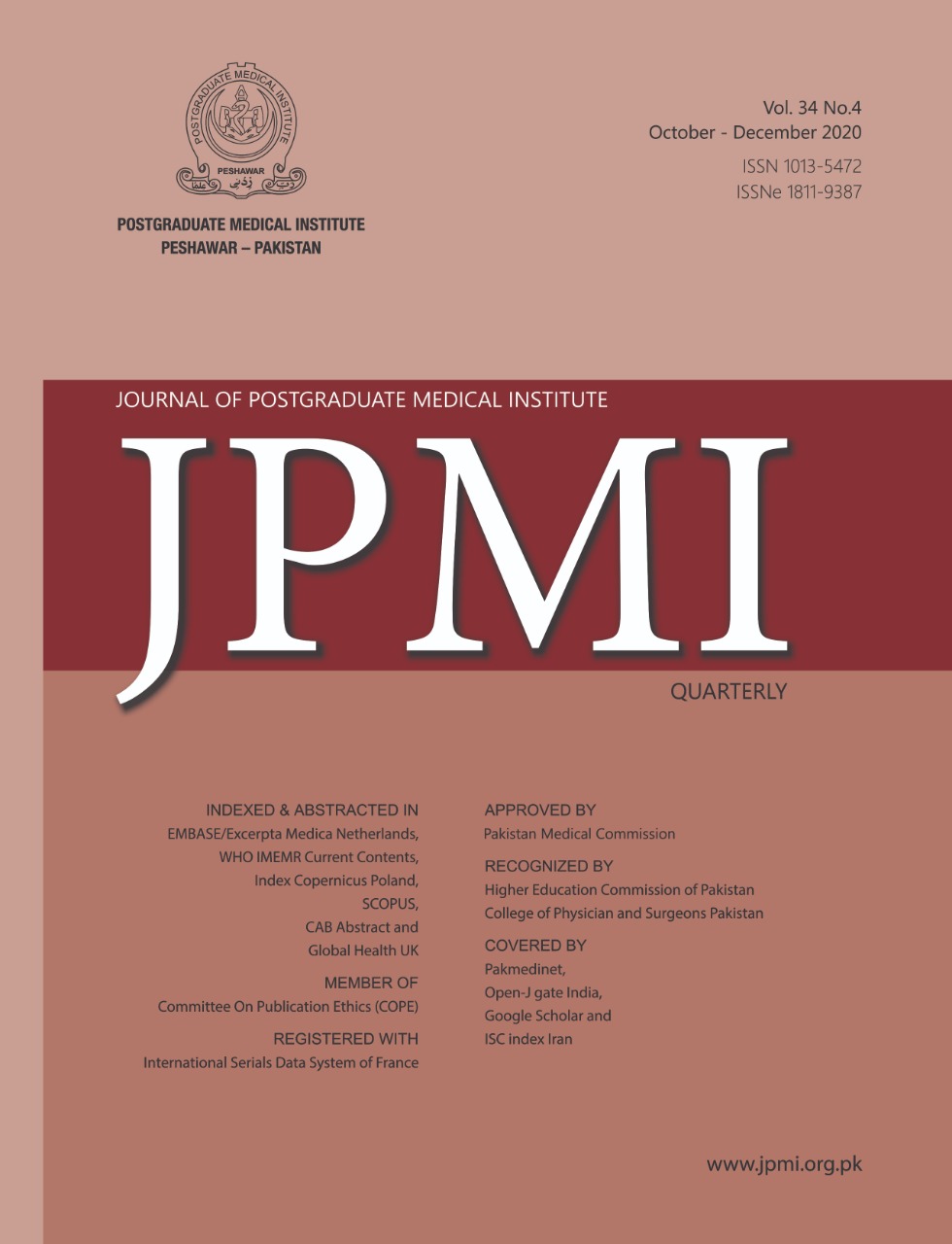ANALYSIS OF ANEMIA AND BLOOD INDICES IN MEN AND PREMENOPAUSAL WOMEN
Main Article Content
Abstract
Objective: To compare general characteristics, laboratory indices, etiologies and underlying causes in men and premenopausal women with anemia.
Methodology: Total 105 patients with anemia presenting to internal medicine clinic of our institution were enrolled in the study. Characteristics of the participants, etiology/underlying cause of anemia, hematological parameters and findings on gastroscopy and colonoscopy were recorded. Pregnant and postmenopausal women and patients with history of blood transfusion were excluded. Data were entered and analyzed with SPSS software (SPSS 15.0 for Windows, IBM Co, Chicago, IL, USA).
Results: Median ages of male and female participants were 62 (25) and 36 (20) years, respectively. Mean corpuscular volume was 84 ±15 fL and 74 ±10 fL, in men and women respectively. Serum ferritin level of the men was significantly higher than those of the women. Pearson's correlation analysis revealed that the best correlatives of hemoglobin in anemic female and male were mean corpuscular volume and red blood cell count respectively. The most common etiology was iron deficiency anemia in both women (75%) and men (63%).
Conclusion: Mean corpuscular volume in women and red blood cell mass in men are best indicators of hemoglobin in anemia
Article Details
Work published in JPMI is licensed under a
Creative Commons Attribution-NonCommercial 2.0 Generic License.
Authors are permitted and encouraged to post their work online (e.g., in institutional repositories or on their website) prior to and during the submission process, as it can lead to productive exchanges, as well as earlier and greater citation of published work.


